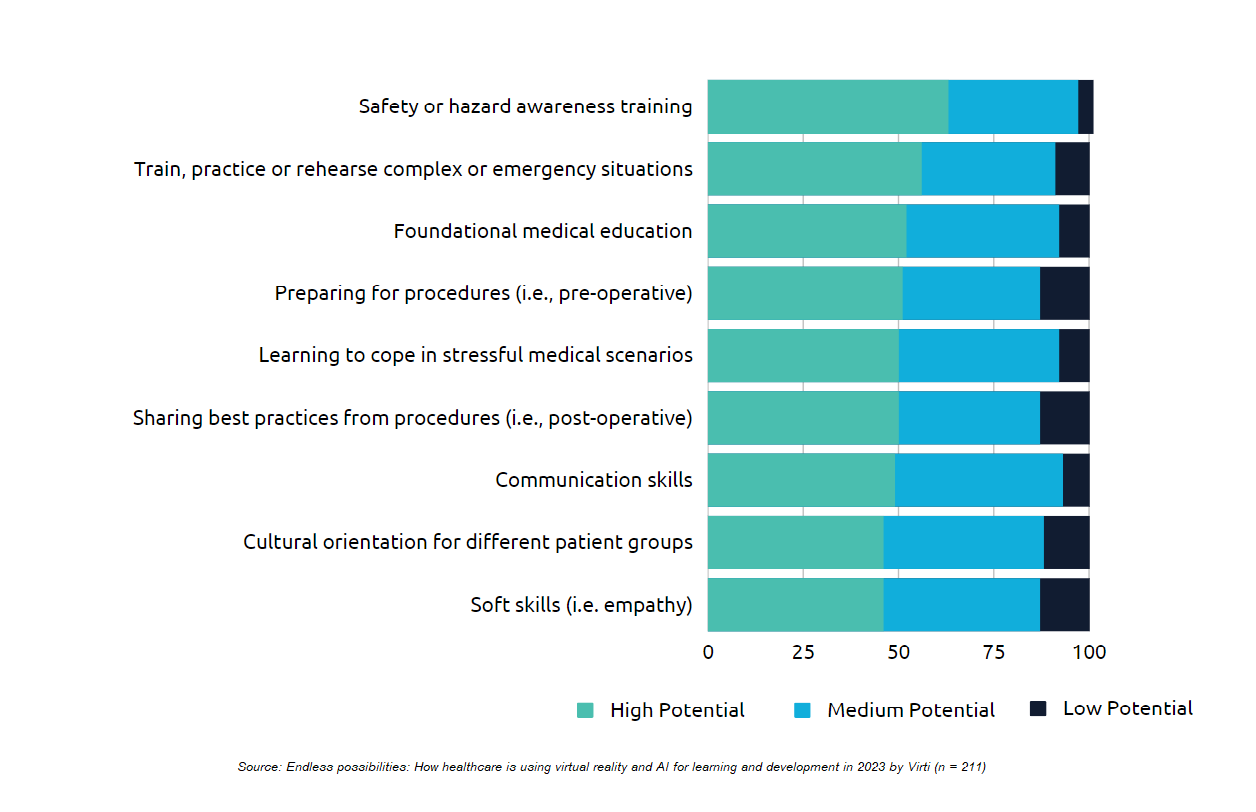9 virtual reality use cases for healthcare with the highest potential

Most learning and development (L&D) professionals in healthcare are familiar with immersive learning technologies. These include virtual reality (VR), augmented reality (AR) and extended reality (XR).
A recent survey we commissioned found a whopping 85% of respondents are at least “somewhat familiar” with these tools. One reason familiarity is so high is that more than three-quarters of respondents work for organizations that either have implemented (34%) or plan to implement (43%) VR/AR tools.
This naturally conjures the question: How are these organizations using the tools?
Fortunately, the survey asked respondents to rank use cases we’ve observed being used in practice by their potential – on a three-point scale of high, medium or low.
Here’s how the answers stacked up:
1. Safety or hazard awareness training – 63%
2. Train, practice or rehearse complex or emergency situations – 56%
3. Foundational medical education – 52%
4. Preparing for procedures (i.e., pre-operative) – 51%
5. Learning to cope in stressful medical scenarios – 50%
6. Sharing best practices from procedures (i.e., post-operative) – 50%
7. Communication and soft-skills training – 49%
8. Soft skills (i.e., communication, empathy) – 46%
9. Cultural orientation for different patient groups – 46%
It’s worth pointing out that the number of possible use cases is endless. For example, the HTC VIVE Medical team has trained 2,500 medical professionals and students to use VR software – and create 183 different simulations and counting.
There’s more detail in the full report which is available for download here: Endless possibilities: How healthcare is using virtual reality and AI for learning and development in 2023

